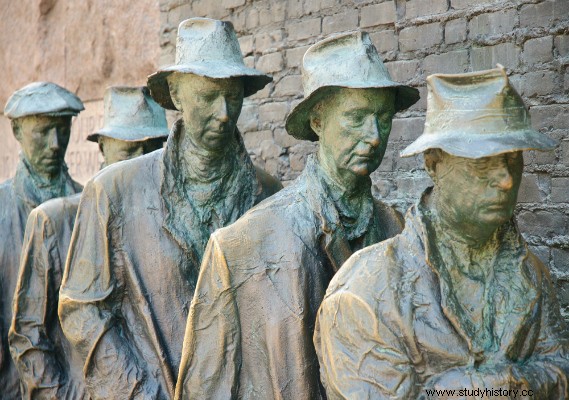
The Crisis of 1929 called into question the feasibility of the measures liberal economics, which pointed to the capitalist market as the ideal instrument to achieve economic and social balance, without massive state intervention. The answer to the crisis was found in the United States and then in the other countries of western capitalism in the expansion of State intervention, with economic planning. In the US, these measures were implemented in the administration of Democratic President Franklin Delano Roosevelt (1933-1945) and named New Deal (New Deal).
The New Deal was influenced by the economic theory of John Maynard Keynes , a British economist who pointed out the need for the economic mediation of the State to guarantee the well-being of the population, an action that liberalism would be unable to perform. The state economic planning strategy brought the New Deal closer to the five-year plans adopted in the USSR, which intensified Soviet industrialization in a period of deep economic crisis in Western capitalism.
To face the economic and social crisis in the USA, Roosevelt used the work of a group of renowned economists inspired by Keynes to elaborate the New Deal, whose main objective was to create conditions for the reduction of unemployment, through the articulation of state and private investments. The main measures were:
- dollar devaluation to make exports more competitive;
- loans to banks to avoid bankruptcies in the financial system;
- creation of the social security system, with emphasis on unemployment insurance and the Security Act of 1935;
- right to organize trade unions;
- stimulation of agricultural production;
- construction of a large number of public works, especially hydroelectric plants and highways.
Stimulating the hiring of workers, seeking a situation of full employment of the economically active population and social security actions would stimulate the population's consumption, heating up industrial, agricultural and services production at all levels. In addition, the intermediation of the unions in the negotiations of the demands tried to avoid violent conflicts, guaranteeing the social order. This perspective of economic action saw capitalism as an integrated mode of production, in which increased consumption, especially of workers, would stimulate a chain development of all economic sectors.
The measures were successful, reinvigorating North American capitalism once again, to the point that studies state that ten years after the implementation of the New Deal, the US approached the economic levels in which it found in 1929.
The New Deal influenced economic policies in Western Europe, in what became known as the Welfare State , social welfare policies that provided the post-war economic boom. The State guaranteed a less unequal distribution of income and created the infrastructure necessary for a dignified life for the majority of the population, investing in health, education and transport.
It was only in the 1970s, with the serious crises that devastated the capitalist world, that Keynesian measures, such as the New Deal, were being replaced and giving way to new liberal-oriented policies. . The epoch of economic neoliberalism had begun .
By Tales Pinto
